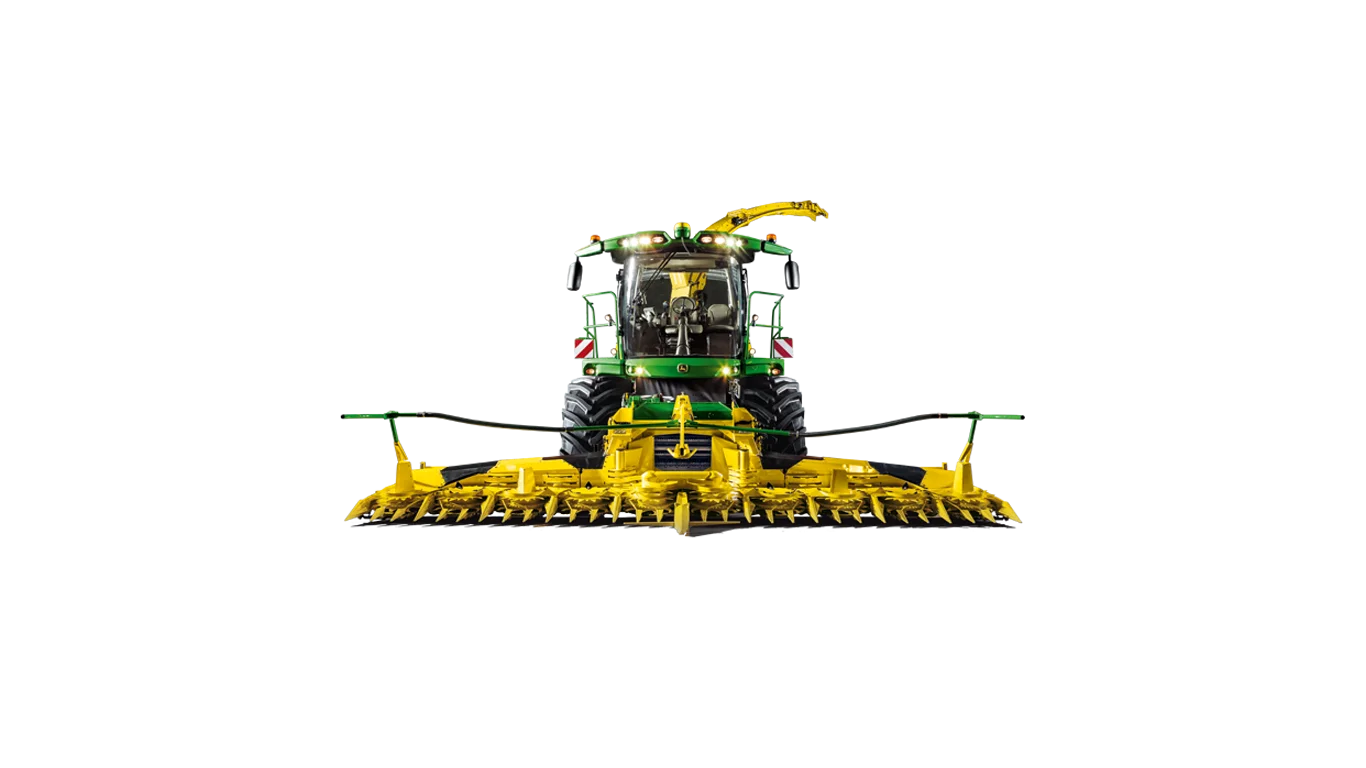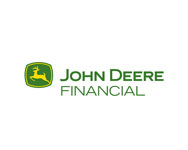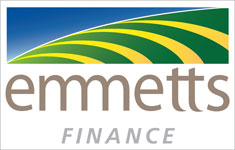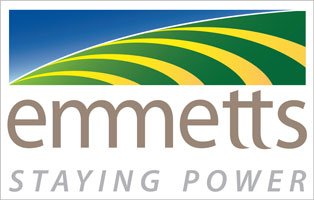
- 430 kW (577 hp) Tier 2 John Deere diesel engine
- All-new design delivers improved serviceability with an integrated KP hoist, easy header hook-up and ground level fuel fill
- A best-in-class cab offers easier to use controls, better display access and visibility
Features
EFFICIENCY BOOSTED
DRIVELINE
Every single component of the 8000 Series’ driveline was designed to contribute to more efficiency. Crop flow components are powered by six main drive on the 13.5 L engine to ensure the prodigious engine power is reliably transferred, and the kernel processor drive has also received a significant upgrade. Overall fuel efficiency improves as well: while maximum engine speed reaches 2,100 rpm, the 8000 Series delivers maximum power at a fuel-saving 1,800 rpm in the 13.5 L engine.
PERFECT CROP FLOW
The feedrolls and the header drive ensure uniform crop intake and an unprecedented throughput per horsepower thanks to a significantly optimised crop flow.
HIGH EFFICIENCY CUTTING
The combination of the knife holder design and long knives, with a 20 mm tungsten carbide coating, means you can keep chopping without any loss in performance as the knives wear. What’s more, with our innovative shearbar system, it’s never been easier to cut high quality silage all season long.
SAVING FUEL ON THE ROAD
Getting a forage harvester from field to field on the road is not exactly its most productive time and costs you fuel and money. That’s where John Deere engine speed management comes in: it can automatically reduce engine rpm during road transport down to 1,250 rpm while you maintain a productive ground speed – that’s more fuel efficiency and more savings.
LOWER COST OF OPERATION
In addition to a lower daily maintenance effort facilitated by fewer access points that are easier to reach, you will be impressed by improved fuel and DEF efficiency.
HARD-WEARING DURA LINE™ PARTS
More uptime, better cost control: crop flow liners and all-crop Dura Line™ Plus shearbars last 4x longer.
3000 ENGINE HOURS
Dura Line™ provides a competitive advantage for your business. Looking back on more than 10 years of lasting longer, we guarantee* our Dura Line™ liners to last for 3,000 engine hours or 5 years of use.
* Guarantee excludes shearbar, knives, knife holders, smooth roll scrapers. Ask your dealer for details.
COMPONENTS THAT LAST
To prevent downtime right from the start, we pack our forage harvesters full of ultra-hard wearing Dura Line™ components throughout the crop flow – shearbars, knife holders, the chute – Dura Line™ is everywhere to let you go season after season without exchanging wear components. Dura Line™ liners will save you cash. Our unique coating is stronger and lasts four times longer**.
LAB-TESTED PROOF
To examine the quality of our wear parts, we took John Deere spout flaps and their competitors to a lab and sandblasted them to simulate wear. The tests showed that John Deere Dura Line™ coated spout flaps last significantly longer than uncoated ones**.
**Internal field test, comparing John Deere wear parts with and without coating.
FORAGE QUALITY
SUPERIOR SILAGE
Better silage quality with our upgraded John Deere Premium KP™ or XStream KP™ and integrated additive dosing.
XSTREAM KP™
Together with the renowned experts from Scherer, a global leader in kernel processing roll design, we developed the new John Deere XStream KP™ for high horsepower. With 250 mm diameter rolls and 50% speed differential it delivers consistently smashed kernels and intensively processed plants regardless of chop length.
PREMIUM KP™
Our Premium KP™ features strong walls with BusaClad lining* instead of chrome, is available with a range of sawtooth numbers, and has been upgraded with new stronger rolls. Achieve excellent forage quality at any chop length and benefit from Dura Line™ rolls’ longer life at higher volume.
POWERFUL GRIP
All power to the ground: our ProDrive™ transmission and 2.15 m tyres that go down to 1 bar for less compaction to protect soil health.
BIGGER TYRES, BETTER GRIP
With diameters of up to 2.15 m, the 8000 Series features extra big tyres. And at up to 0.5 m it also delivers extremely high ground clearance. Add to this tyre pressure of as low as 1 bar, a reduced overall weight and you have a simple and efficient formula that gives you more traction and less compaction, still allowing you to zip along at speeds of up to 40 km/h on the road.
PRODRIVE™ – A TRANSMISSION BENCHMARK
ProDrive™ is the other half of the traction equation, with numerous other benefits. The sophistication of this breakthrough transmission technology stays on the inside – to you it is supremely easy to operate. ProDrive™ provides automatic shifting across two pre-set speed ranges in which you select a speed that will be maintained continuously, even when you’re harvesting downhill on slopes. It could not be simpler: There’s no gear lever or gear selection, and no parking brake, just a master control lever you push to move. Braking is just as easy – just pull back the lever and two brake units, and the parking brake engages automatically. While ProDrive™ gives you all the traction you need, it is also gentle on soft soil. On a 4WD harvester, if a wheel loses traction, the hydraulic flow is automatically directed to the wheels that still have grip and you keep moving. On softer soil, a speed differential between the front and rear axles prevents the wheels from disturbing the soil when turning.
HIGHEST GROUND CLEARANCE AVAILABLE ON THE MARKET
MORE SMILES PER HECTARE
CAB
It’s quiet in here. You can focus and relax. You have all your comforts and tech tools at hand to enjoy hectare after hectare of pure productivity. Sit back and smile, you’re in an 8000.
1 | SEE MORE CLEARLY
More glass, less obstructions, less reflections, rain or shine, day or night. It’s all about a better view of everything.
2 | ON TOP OF THINGS
The higher driving position gives you more control, the centre-cab seat adjusts to you, its air suspension protects you.
3 | INSTRUCTOR SEAT
Take a passenger along, or just fold it away to turn it into a practical workspace.
INTELLIGENT FORAGE MANAGEMENT
The HarvestLab™ 3000 measures and documents both dry matter and constituents in real-time for accurate silage quality analysis.
BETTER INFORMATION, MORE VALUE
HARVESTLAB™ 3000 FORAGE AND MANURE ANALYSIS
Take real-time forage and manure information from the HarvestLab™ 3000 sensor and make in-field adjustments to create the best product you have ever delivered – on the fly, accurately and reliably.
ONE SENSOR, FOUR APPLICATIONS
You can use HarvestLab™ 3000 on an forage harvester, combine harvester, slurry tanker, or as a mobile laboratory.

INTEGRATED CROP DOSING
HarvestLab™ 3000 sensor readings also work beautifully with another feature of the 8000 and 9000 Series: the fully integrated ADS Twin Line system doses silage additives based on time, harvested tons or on dry matter tons using HarvestLab™ 3000 sensor readings. Supplied from two different tanks, the dosing nozzles are positioned at air intake of the crop accelerator and allow you to choose either fixed or variable dosing rates based on moisture readings from HarvestLab™ 3000. The twin tanks allow you to add two different inoculants together, or apply them at different times, giving you the flexibility to adapt to each specific job’s needs.



THE SECRET TO GREAT SILAGE
HARVESTLAB™ 3000 ON A FORAGE HARVESTER
HarvestLab™ 3000 simultaneously measures the dry matter and various constituents of harvested crops. Its sensor uses near-infrared-reflectance (NIR) technology that takes over 4,000 readings per second to produce instant and highly accurate data on the go. Since its introduction in 2008, thousands of HarvestLab™ units have been operating around the world, with excellent performance even in challenging field conditions.
The site-specific data from HarvestLab™ 3000 helps crop growers improve their field nutrient management much better than from a single sample sent to a lab. On a forage harvester, HarvestLab™ 3000 enables automated length of cut adjustment depending on dry matter content, ensuring optimum silage compaction and conservation. Livestock and dairy farmers profit from real-time detection of changes in feed quality and better silage additive control. Biogas producers like HarvestLab™ 3000 for the accurate information they get on the crop quality they buy.
CAPABILITIES AT ONE GLANCE
– DM, protein, starch, fibre, ADF, NDF, crude sugar, ash and metabolic energy analysis on-the-go
– Automatic length of cut adjustment
– Precise dosing of silage additives
– Measuring results also accessible via the Operations Center

Total Care
Total Care overview
 Self Propelled Forage Harvester in the field
Self Propelled Forage Harvester in the fieldTotal Care is an extended service program that allows customers to secure annual maintenance costs and be in a better position to prevent downtime during harvest. Total Care is available to customers purchasing a new 8000 or 9000 Series Self Propelled Forage Harvester. There are four plan offerings, Total Care Select, Total Care Ultimate, Total Care Select – Full Service, and Total Care Ultimate – Full Service. The Full Service plans indicate labor IS included while our original Total Care Select and Ultimate plans do not include labor. All Total Care plans are designed to help you maintain the original performance and uptime of your new machine.
Benefits
- Maximize machine performance and reliability through regular inspections and regularly scheduled maintenance
- Manage unforeseen financial risk and control operating expenses
- Replace worn parts as needed to ensure the customer does not experience downtime during the next use season
- In-season wear parts replacement (if needed) on both the traction unit and front-end equipment
Requirements and term lengths
| Total Care Select Total Care Select – Full Service | PowerGard Comprehensive Requirement | Dura Line Requirement |
| 3 years/1500 hours | 4 years/1500 hours | Basic, Premium, or Ultimate |
| 3 years/2000 hours | 4 years/2500 hours | Basic, Premium, or Ultimate |
| 3 years/2500 hours | 4 years/3000 hours | Basic, Premium, or Ultimate |
| 3 years/3000 hours | 4 years/3500 hours | Basic, Premium, or Ultimate |
| Total Care Ultimate Total Care Ultimate – Full Service | PowerGard Comprehensive Requirement | Dura Line Requirement |
| 3 years/1500 hours | 4 years/1500 hours | Ultimate |
| 3 years/2000 hours | 4 years/2500 hours | Ultimate |
| 3 years/2500 hours | 4 years/3000 hours | Ultimate |
| 3 years/3000 hours | 4 years/3500 hours | Ultimate |
Plan details
| Total Care Select Total Care Select – Full Service | Inspection Plan | Maintenance Plan | Wear Parts |
| 3 years/1500 hours | Three inspections | Three scheduled maintenance events | Wear parts coverage allowance included |
| 3 years/2000 hours | Four inspections | Four scheduled maintenance events | |
| 3 years/2500 hours | Five inspections | Five scheduled maintenance events | |
| 3 years/3000 hours | Six inspections | Six scheduled maintenance events |
| Total Care Ultimate Total Care Ultimate – Full Service | Inspection Plan | Maintenance Plan | Wear Parts | Couverture supplémentaire |
| 3 years/1500 hours | Three inspections | Six scheduled maintenance events | Wear parts coverage allowance included | Couverture de remplacement des pièces d’usure supplémentaires et couverture de filtre supplémentaire |
| 3 years/2000 hours | Four inspections | Eight scheduled maintenance events | ||
| 3 years/2500 hours | Five inspections | Ten scheduled maintenance events | ||
| 3 years/3000 hours | Six inspections | 12 scheduled maintenance events |
*Pour rappel, seuls les plans d’entretien complet comprennent les coûts de main-d’œuvre
Not included:
- In-season maintenance
- Technician field travel and machine transport
- Insurance covered events
- Abuse and/or neglect
For more information, see the John Deere Protect website.
Additional information in Dura Line wear parts packages.
Specifications
Key Specs
- Rated Power
- Maximum power
- 430 kW
585 PS / 577 hp
- Engine
- Type
PowerTech™ PSS 13.5L
Exhaust emission regulation compliancy - Final Tier 4 / Stage V
Displacement
13.5 L
823.8 cu in.
Model
Europe: 6135HZ021
North America: 6135HZ022
Cylinders
Inline 6
- Fuel system
- Unit injector plus four valves
- Fuel tank capacity
- 1.100 L
290.6 U.S. gal.
- DEF tank capacity ( for FT4 or EU Stage V emission level)
- 43 L
11.4 U.S. gal.
Engine Power
- Rated Power
- Maximum power
- 430 kW
585 PS / 577 hp
- Fuel tank capacity
- 1100 L
290.6 U.S. gal.
- DEF tank capacity ( for FT4 or EU Stage V emission level)
- 43 L
11.4 U.S. gal.
Engine
- Manufacturer
- John Deere
- Type
- PowerTech™ PSS 13.5L
Exhaust emission regulation compliancy - Final Tier 4 / Stage V
- Model
- Europe: 6135HZ021
North America: 6135HZ022
- Displacement
- 13.5 L
823.8 cu in.
- Cylinders
- In line six
- Speed on road
- 1400-2100 rpm
- Engine/ground speed management
- Optional
- Fuel system
- Unit injector plus four valves
- Air compressor
Cooling System
- Cooling system capacity
- 113 L
29.85 U.S. gal.
- Cooling fan drive
- Direct
Driveline
- Ground drive
- Standard: Hydrostatic, 3-speed - manual shift with helical gears
Engine rpm on road: 1650 rpm
Optional: ProDrive™, autoshift transmission, differential lock (automatic and manual), automatic wet brake system
Engine rpm on road: 1400-2100 rpm
- Hydraulics
- Load sensing
- Crop harvesting unit
- Harvest channel standard
- Crop flow components
- Low-friction crop-flow concept
- Main clutch
- Dry clutch
- Number of discs
- One disc
- Main driveband
- Reinforced with Kevlar inserts
- Belt tensioning
- Active, hydraulic pressure
- Main driveband, polybelt belts
- Six ribs
Electrical System/Electrical And Hydraulic System
- Type/voltage
- 12 V
- Batteries/battery quantity/capacity
- 2 x 174 amp-hr
- Alternator
- 200 amp
- Hydraulic system capacity
- 50 L
13.2 U.S. gal.
Ground Drive
- Type
- Standard: hydrostatic, 3-speed manual shift
Optional: ProDrive, autoshift transmission
- Differential lock
- Manual or automatic (optional comes with ProDrive)
- Maximum transport speed
- Hydrostatic transmission: 25 / 30 km/h
15.5 / 18.6 mph
ProDrive transmission: 20 / 25 / 30 / 40 km/h
12.4 / 15.5 / 18.6 / 24.9 mph
- Rear axle type
- Hydro-mechanical 4WD
- Automatic wet brake system
- Available with ProDrive transmission
- Engine speed management
- Optional
Cab
- Tilt and extend steering column
- Standard
- Air conditioning and heater
- Standard - ClimaTrak
- Cool box
- Optional
- Trainee seat
- Standard
Leather seat optional
- Hectare counter
- Standard
- Operator information system
- Cornerpost display
Armrest display (Touchscreen)
Side rail display (Touchscreen) optional
- CAN bus electronics
- Standard
- Operator's seat
- Air-suspension seat optional
Leather seat optional
- Panoramic view windows
- Side window wiper
- Rear and side window wiper optional
Parallel-type windscreen wiper
- Electric adjust and heated
- Optional on rear view mirrors
- Rearview mirrors
- Standard
- Hand wash tank capacity
Machine Management Solutions
- Yield monitoring
- Harvest Monitor™ optional
- Documentation
- Harvest Doc™ optional
- Crop analysis
- HarvestLab™ 3000 optional
- Length-of-cut control based on crop parameter
- Infinitely variable length-of-cut (IVLOC™) standard
AutoLOC™ optional with HarvestLab 3000
- Assisted steering systems
- AutoTrac or Manual RowSense optional
Harvest Channel
- Width
- Crop flow components
Header Connection
- Infinitely variable header drive
- Lateral pivoting frame
- Multicoupler
- Auto PTO coupler
- Header drive
- Header height control
- Grass pickups (transport width)
- Maize headers
- Driveline
- Header connection
Length Of Cut
Feeding System/Feedrolls
- Feed roll frame opening
- Swing away, 37-45 degree (angle)
- Number
- Four
- Metal detector
- Standard
Stone detector is optional
- Stone detector
- Width, front
- 660 mm
26 in.
- Standard feedroll drive
- Hydro feedroll drive IVLOC standard
Infinitely variable header drive speed standard
- Optional feedroll drive
Cutterhead
- Type
- Dura-Drum™ cutterhead
- Cutterhead housing width
- 686 mm
27 in.
- Knife drum width
- 680 mm
26.8 in.
- Knife drum diameter
- 670 mm
26.3 in.
- Speed at rated engine speed
- Standard - 1100 rpm
Optional - 1200 rpm
- Knife types available (crop)
- Straight - grass
Curved - corn
- Number of knives
- 40 - 48 - 56 - 64
- Shear bar options
- Shear bar, reversible
- Grass, corn, or Dura Line Plus
- Shear bar adjust
- Fine shearbar adjust
Quick shearbar adjust
Knife Sharpening System
- Reverse rotation
- Yes
- Automatic from cab
- Yes, remote from cab
- Reverse drive
- Standard
- Reverse speed
- Sharpening modes
- Grinding and finishing
Kernel Processor
- Type
- Premium KP (8100-8600)
XStream KP (8300-8600)
- Quick-change
- Quick kernel processor - swing in/swing out
- Quick KP removal
- Optional: Crane with remote-controlled electric hoist
John Deere Premium Kp
- Housing
- Standard KP housing
- Lubrication
- Grease
- Roll diameter
- 240 mm
9.45 in.
- Speed differential / Roll speed (lower)
- 32 percent
Optional 40 percent
- Maize - standard sawtooth or Dura Line™ roll teeth number (speed differential)
- Whole crop - standard sawtooth roll teeth number (speed differential)
- Sorghum, roll teeth number (speed differential)
- 238 (32 percent)
- Weight
- 320 kg
145 lb
- Available KP rolls
- Standard sawtooth
Duraline sawtooth
Whole crop
John Deere Xstream Kp
- Housing
- Heavy duty housing with KP roll quick exchange system
- Lubrication
- Pressurized oil
- Roll diameter
- 250 mm
9.84 in.
- Speed differential / Roll speed (lower)
- 50 percent
- Bearing temperature monitoring system
- Optional
- Maize - Dura Line sawtooth or XCut roll teeth number (speed differential)
- Whole crop - Dura Line XCut roll teeth number (speed differential)
- Sorghum, roll teeth number (speed differential)
- 238 (32 percent)
- Weight
- Available KP rolls
- Duraline sawtooth
Duraline XCut
Whole crop XCut
Serrated Roller (Kernel Processor)
- Maize, roll teeth number (speed differential)
- Wholecrop, roll teeth number (speed differential)
- Sorghum, roll teeth number (speed differential)
- Weight
Disk Type (Kernel Processor)
- Number of disks (top/bottom)
- Diameter of disks
- Weight
Blower/Crop Accelerator
- Rotor diameter/housing width
- Rotor diameter: 560 mm
22.86 in.
Housing width: 540 mm
21.26 in.
- Number of blades
- 10
- Speed (option)
- 1800 rpm
Spout
- Rotation, degrees
- 210 degree (angle)
- Hydraulic height position
- Hydraulic raise and lower standard
Automatic spout positioning optional
- Double-cap deflection
- Standard
- Number of wear liners
- Reach from center line (Optional)
- Working height (maximum)
Maintenance
- Rotary radiator screen cleaner
- Standard
- Automatic lubrication system
- AutoLube optional
- Engine oil and filter change duration
- Plus-50™ II oil: 500 hours
Other oil: 250 hours
Vehicle
- With front tires
- 710/70R42
- With rear tires
- 620/60R30
- Transport length (without header)
- 6.6 m
21.7 ft
- Transport width (without header)
- 3-3.7 m
9.84-12.1 ft
- Transport height (to cab roof)
- 3.89 m
12.75 ft
- Working height (maximum)
- Height to spout: 6.60 m
21.65 ft
- Approximate weight (without header)


